- Reflection on the field trip
On Thursday, our team visited the Shanghai Pudong New Area Special School. The first thing I found is that those “special kids” have fantastic talent in some ways, for example, drawing. Here is the video I took showing their paintings.
Therefore, I think kids with disabilities have their specific interests, and they have many potential abilities that haven’t been fully discovered. I think the school does a good job in cultivating children’s interests, such as gardening clubs, painting exhibitions and so on. Maybe the school can design more fundamental standard courses for them to explore their interests and advanced professional courses to further learn about their interests.
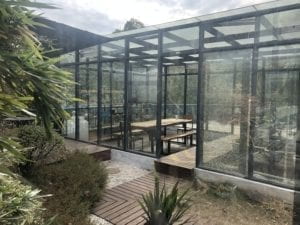
Secondly, I found kids in this school can understand music and pictures better than words. In other words, music and photos can assist them in their treatment. When observing the 1-on-1 class for the kid with cerebral palsy, I found a piece of soothing piano music was played during the class. And when giving instructions, the teacher would show the kid pictures as well as use words (but the kid understood images better because he was always watching the photo when the teacher is talking to him). So I think when designing for those kids, music, pictures, and more sensory equipment can be considered to help them better understand.
Thirdly, the last class I observed is an art class about Beijing Opera. The curriculum is almost the same as a normal primary school art curriculum, but the teacher intentionally uses a lot of visualized methods to teach, such as variable slides, acting. Also, she uses repetition to strengthen kids’ memory because they will continuously forget what they learned if it’s not repeated. Similar to the second thought above, I feel visualization can be well applied to the class for the special school. The topic about Beijing Opera reminds me of my final project of the interaction lab, which is a mask-changing project. By shaking a fan, users can change their masks on the screen. When the different colors of masks appear, the corresponding meaning of the colors will appear on the screen as well. This project can be associated with educational purposes.
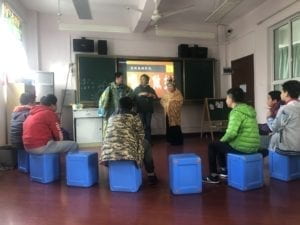
2. Describe your project idea (individual)
1. Describe your partner as a person (not PwD)
My partner is called Orange. She is an energetic, open-minded, positive woman. She came here with her friend by the metro. She attended Hackability in the summer, and she got the product from that workshop, which is a cup holder. She is easy-going, and the communication between us is smooth.
2. What are their desires/challenges/difficulties?
She is clear about what her problem is and what the requirement would be, which helps us define the question we need to solve. On rainy days she finds it very inconvenient to hold an umbrella in one hand and use a wheelchair in the other. So she wants us to help her make an umbrella holder on the wheelchair to support her umbrella when it’s raining.
3. What is your project? 1 paragraph description + Photos + Videos
Our project is an umbrella holder that can be attached to a wheelchair. It’s elastic and can be folded. It is as shown in the picture below:
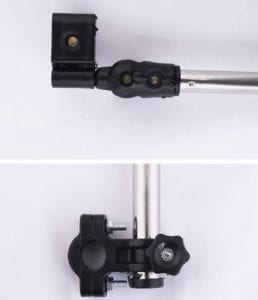
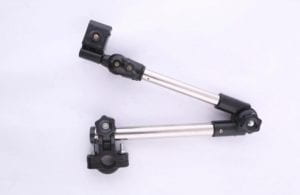
We drew a rough draft and made the first prototype out of paper.
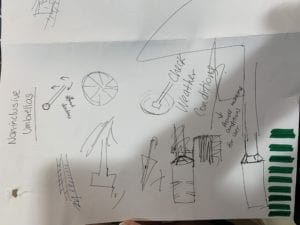
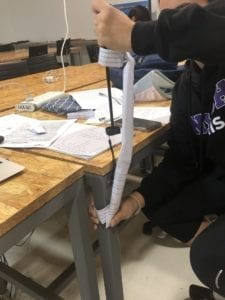
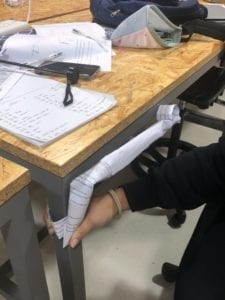
Then we made it with stronger cardboard and tape to test the structure.
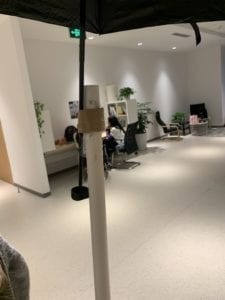
There are still many details to consider. So that’s what we’ve done so far.
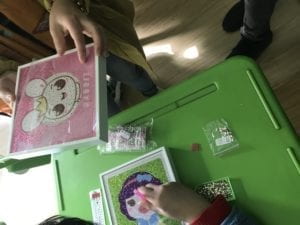
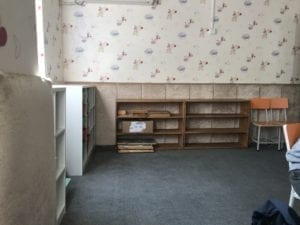
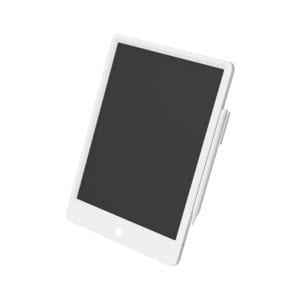
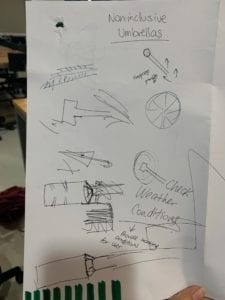
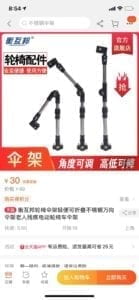
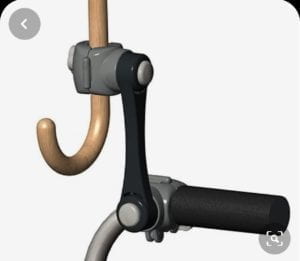
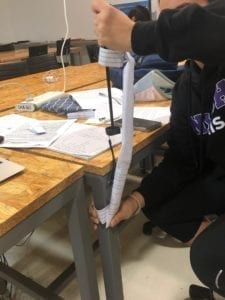
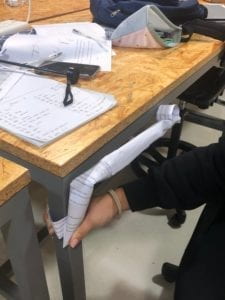
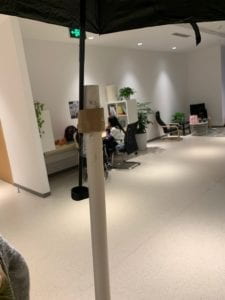
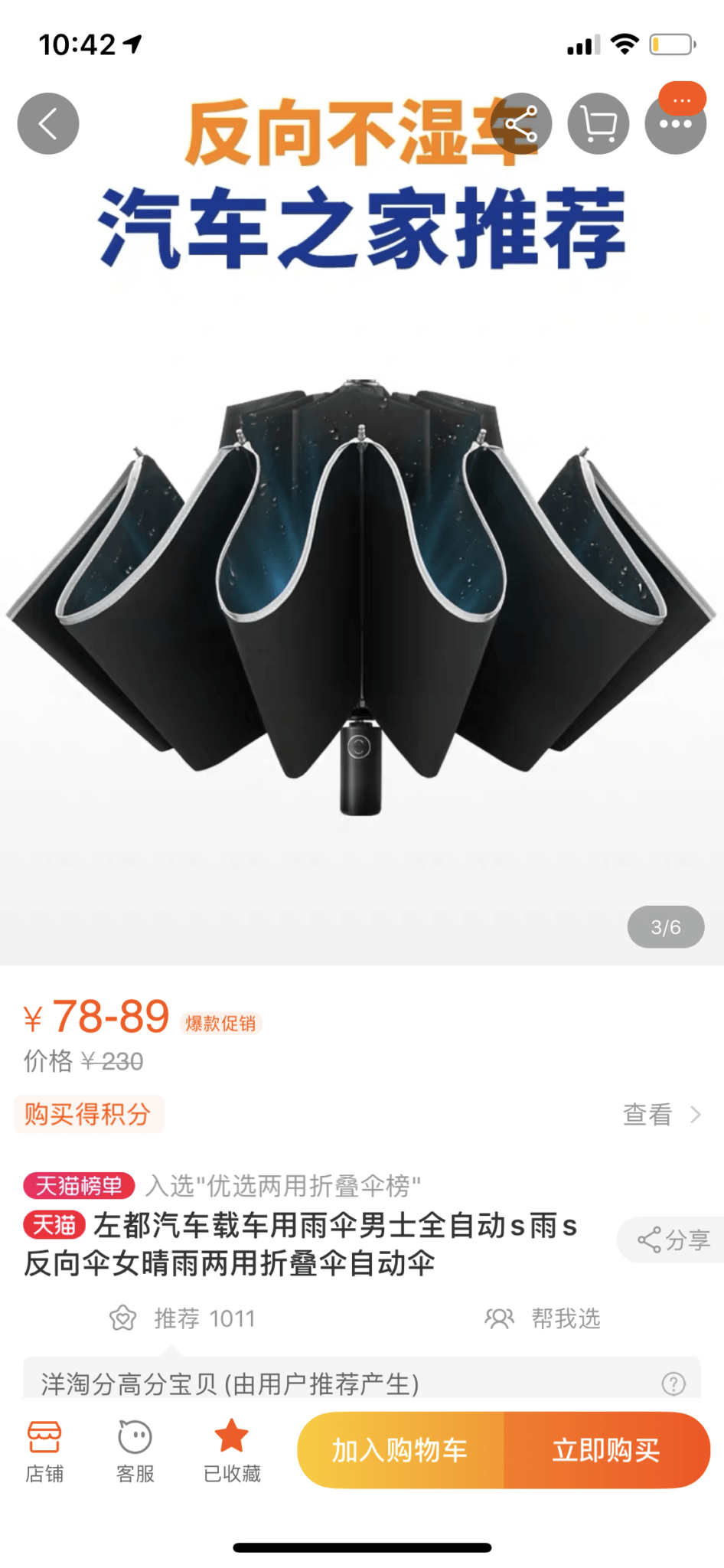 in case she will get wet when closing the umbrella. Our challenge would be how to fix the umbrella in that position after she pulled it up tightly and to make sure its safety.
in case she will get wet when closing the umbrella. Our challenge would be how to fix the umbrella in that position after she pulled it up tightly and to make sure its safety.
